
Incredible in the execution of the canvas “Transitional Moment” belongs to the brush of Surrealist Dali. It was written in 1934 at the peak of the artist’s fame. The narration of the picture, as always, is not subject to sanity and is rather difficult.
An attempt to adapt the meaning of the “Moment” to a reading, such as a landscape or a portrait, will fail. Hence, what the author wanted to say is a mystery and gives space for his own imagination. Our fantasy with you. You can draw a narrative to the name of the picture. “Transitional” – this is what? Perhaps, the very one that Dali portrayed in the image of a woman in white, and perhaps, the author meant a global migration through the sands into the city. In the one, the city that looms mirage in the background. Of course, the second option is more poetic and full of deep meaning.
In the plot, Dali invested his own experiences and reflections. His thoughts are directed toward the eternal search for his own shelter – for thoughts, for the body, for the soul. The space of its dwelling is a desert, a horizon, an unattainable mirage. Dali strives to reach the comfort and warmth of that city. His even journey is violated by a woman who crosses. Considering the fact that in 1934 – the date of the betrothal with Gala, the long-cherished lover of El Salvador, the author could imbue her image with work.
It was her appearance that led to changes in the nature of the works, giving them female images of Gala. The symbiosis of fiction and reality brought to life the work saturated with metaphors. There is a lot of air and space in the picture. Cumulus clouds give rise to intricate pictures and metamorphoses and also create a kind of transition from one image to another.
The color of the work is warm. Dali’s letter was smooth, calm, painstaking. He paid attention to the contrasts of shadows and light, thereby giving the parts the right volume. The artist, as usual, seeks to convey the significance of light in his landscapes. He writes long black shadows, and the main background displays very light colors with an abundance of white. The direction of the shadows determines the dynamics of movement and direction.
The departing star is not reflected in the picture, but it also experiences the moment of transition from everyday life to night sleep. It is precisely somewhere there, about which bright glares and all the same strange spots scream, which throw objects onto the plane.
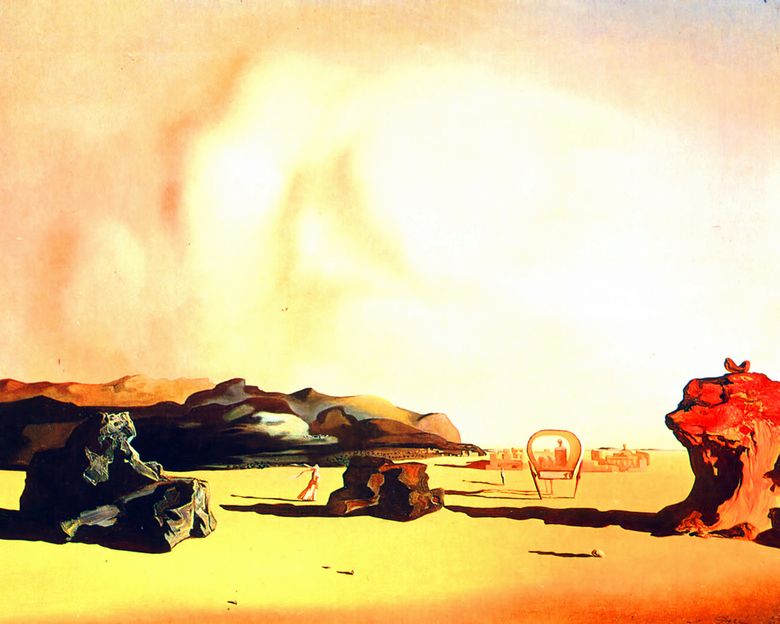 Moment de transition – Salvador Dali
Moment de transition – Salvador Dali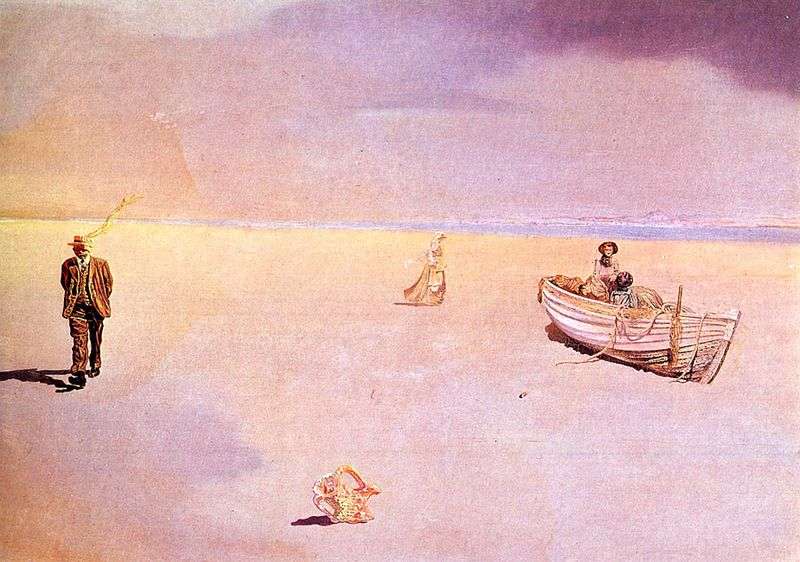 Astral paranoid image by Salvador Dali
Astral paranoid image by Salvador Dali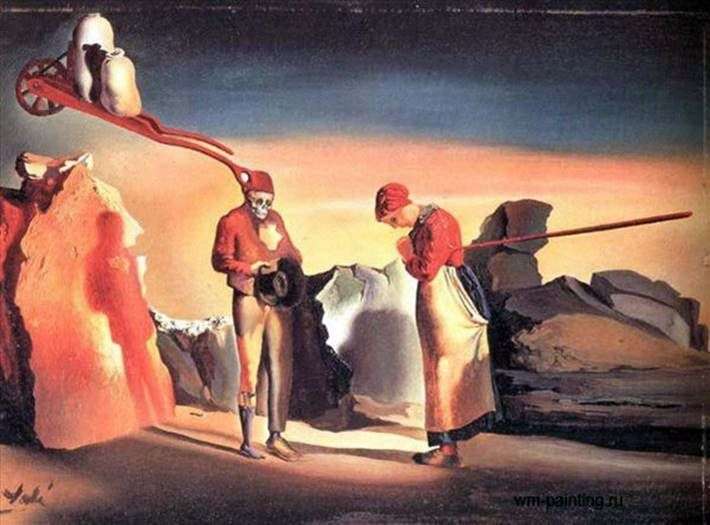 Atavism of Twilight by Salvador Dali
Atavism of Twilight by Salvador Dali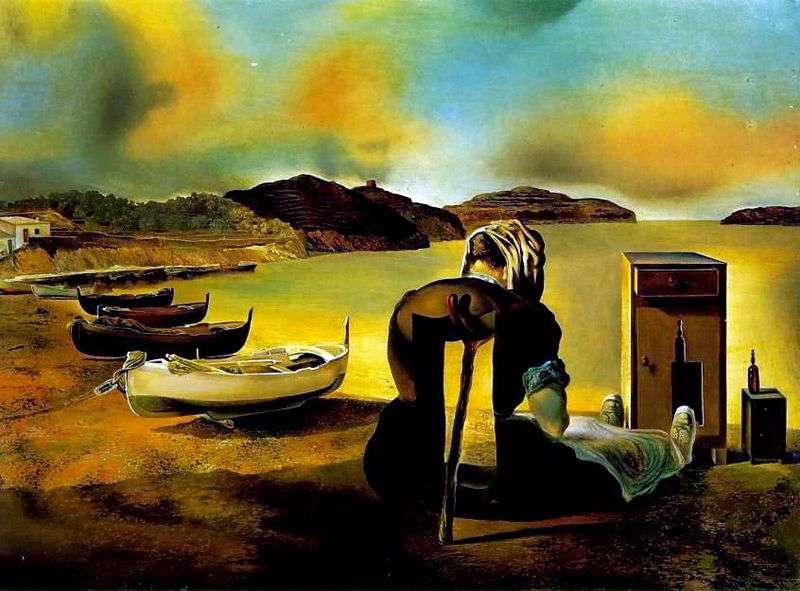 Weaning from the breast, feeding the furniture-fodder by Salvador Dali
Weaning from the breast, feeding the furniture-fodder by Salvador Dali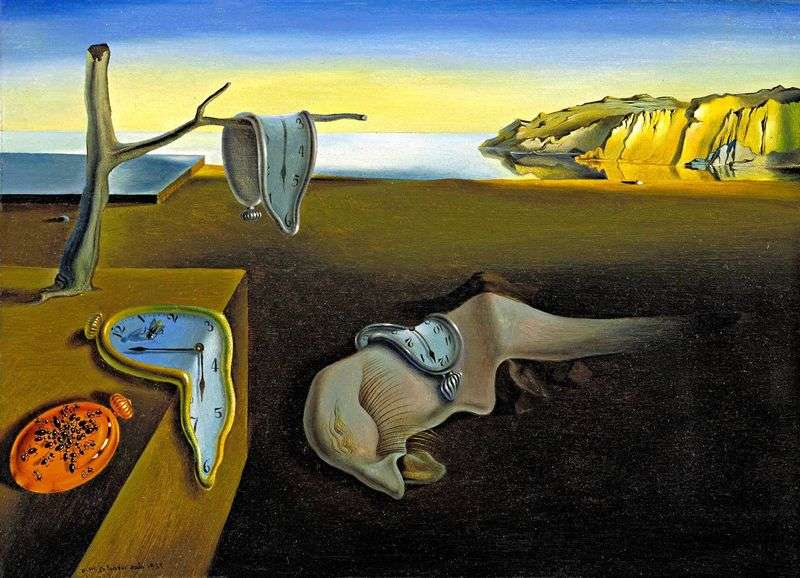 Consistency of memory by Salvador Dali
Consistency of memory by Salvador Dali Ghost and illusion by Salvador Dali
Ghost and illusion by Salvador Dali Allegory of American Christmas by Salvador Dali
Allegory of American Christmas by Salvador Dali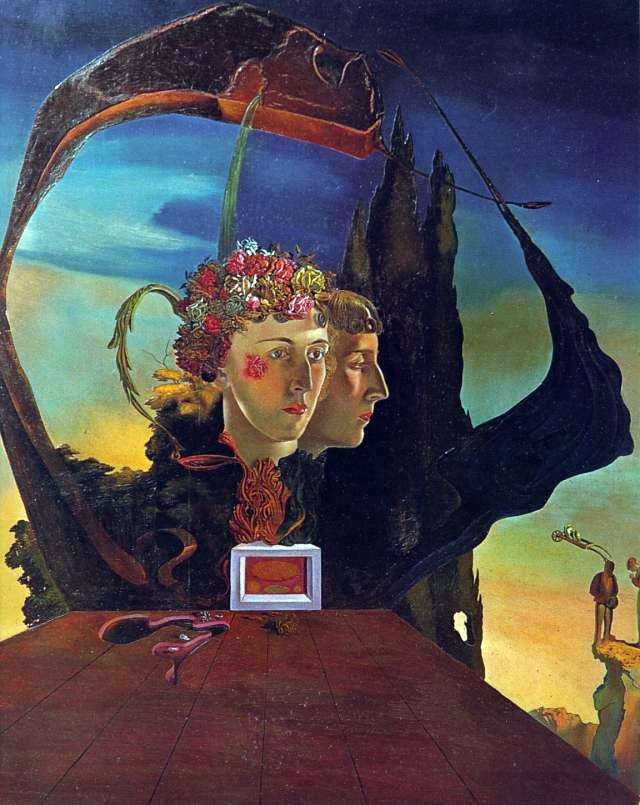 Portrait of the Viscountess Marie-Laura de Noai by Salvador Dali
Portrait of the Viscountess Marie-Laura de Noai by Salvador Dali